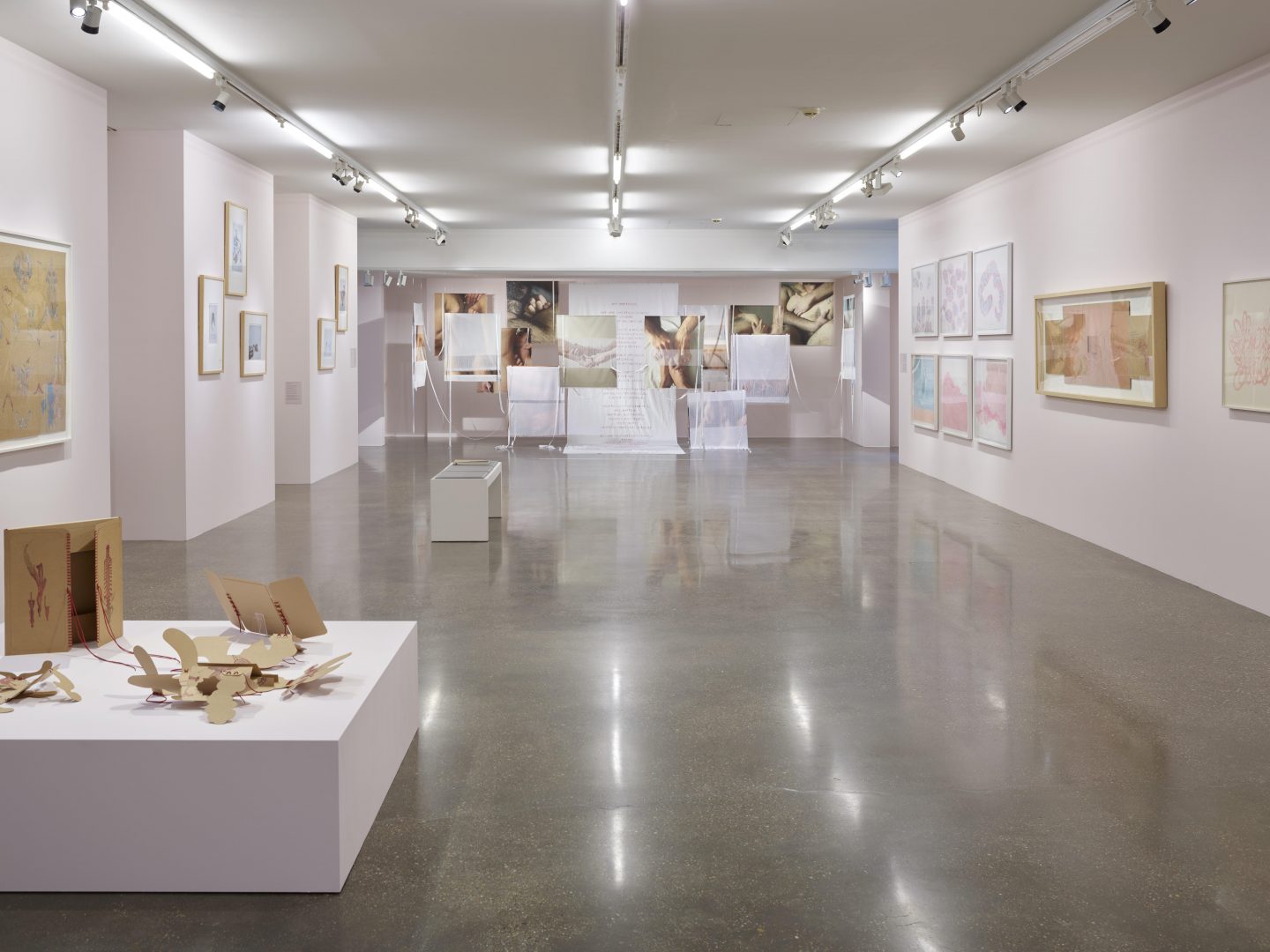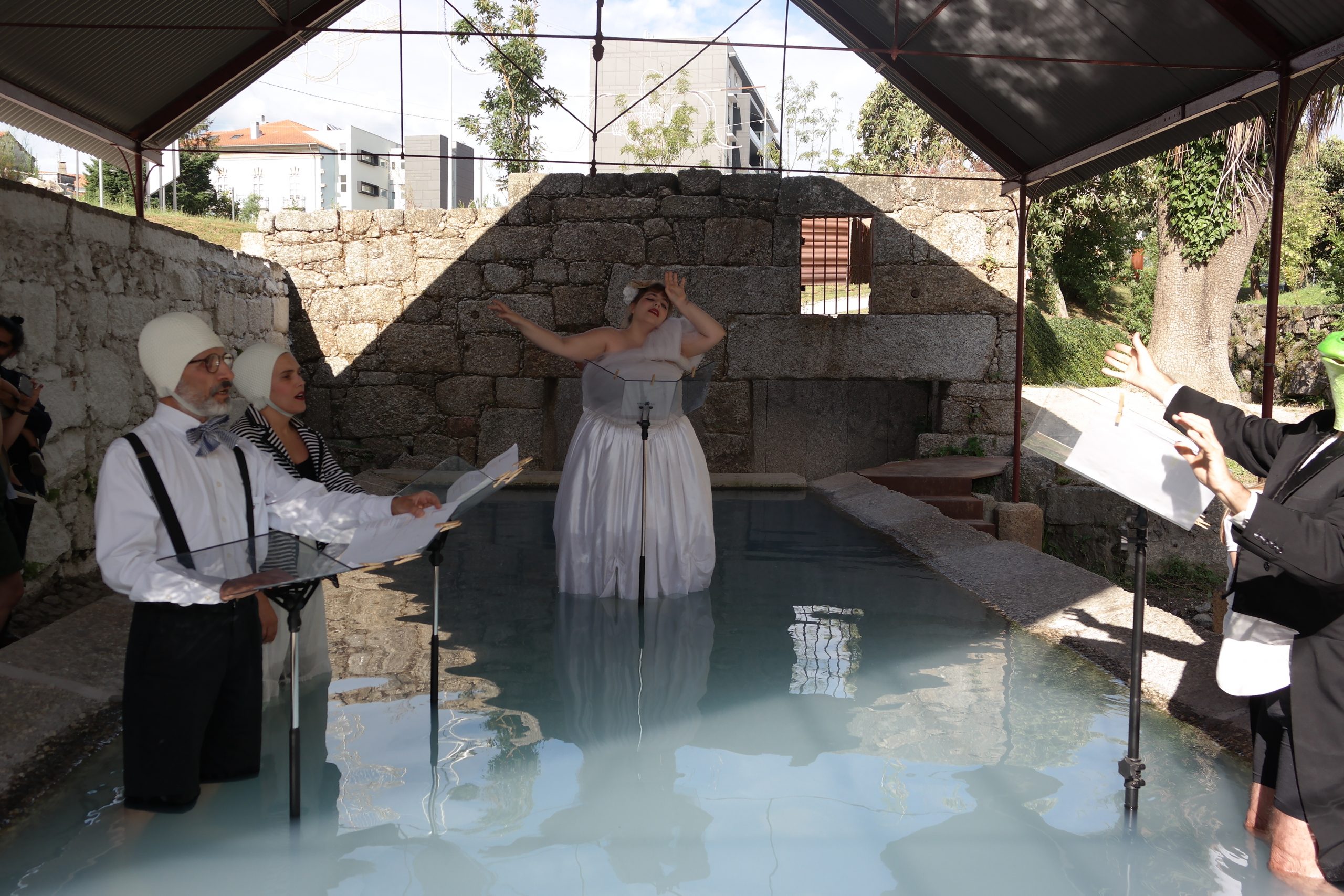Upon entering Gabris‘ (*1986 in Hnúšťa, Slovakia) exhibition, visitors are greeted by a seemingly harmonious blend of delicate forms and pastel colours, creating an open and playful atmosphere. The space pulsates with a soft energy and, with its consistent artistic formal language and delicateness, invites visitors to explore the nuanced relationship between body, soul, resistance, intimacy, and agency. His artworks, ranging from fine lines on paper to cardboard installations, copperplate engravings, a full-room installation, and a written manifesto, directly address the viewership. Guided tours of various formats can still be attended until the closing on February 18th, 2023. While most visitors might have navigated the space with great interest and differentiated consideration of the addressed topics, some visitors might have yearned for more interactive elements to fully engage with the exhibits.
Gabris’ art is primarily concerned with queer bodies, using the body – in both abstract or concrete form, as a medium to explore excluding and including mechanisms through a postcolonial lens that is openly critical of institutions. The works displayed transcend conventional boundaries by mixing human and insects elements in the name-giving series: “This Space Is Too Small For Our Bodies” (2023), which features extensions for the body, made of cardboard, intricately woven together with colorful threads. An attempt at playfully creating queer embodiments which exist between binary, conventional heteronormative body-norms. The work offers a perspective that includes “multiplicities of gender” that may remain “unfixed, never fully determined by a stable identitarian logic”[1].
The work “Bodyshop” transcends boundaries between “human and non-human beings.[2]” Lastly, the centerpiece “ERROR – ROMA CORPOREALITY AND THEIR NON-BINARY SPACES” (2021) addresses the boundaries of the exhibition space itself as insufficient to depict the struggle for recognition among marginalized communities. The installation composed of lengths of fabric, digital prints, and a manifesto with embroidered text separates the space, reserving some “intimacy” for the bodies depicted, conveying both empowerment and vulnerability. Some elements are backward-facing, obtaining a sense of privacy within the institutional space.
In essence, this exhibition serves as a potent catalyst for introspection and societal critique and prompts the assumed “us“ to confront uncomfortable truths. It challenges us to question white and heteronormative privilege, the influence of institutions, and the boundaries society imposes on our bodies and they representation. As we engage with these inquiries, we’re compelled to consider whether the dialogue it sparks will break down barriers or unintentionally exclude other voices, too.
[1] Hil(ary) Malatino. Queer Embodiment: Monstrosity, Medical Violence, and Intersex Experience (Lincoln, NE: University of Nebraska Press, 2019), p. 196.
[2] Gabris, Robert. This Space Is Too Small For Our Bodies. Ed. Stella Rollig, Christiane Erharter, Vendomeprojects.art; Christiane Erharter, Robert Gabris, Christian Kravagna, Stella Rollig, Felicitas Thun-Hohenstein, Denisa Tomková. (Cologne, DE: Walther & Franz König, 2023), p. 26.










